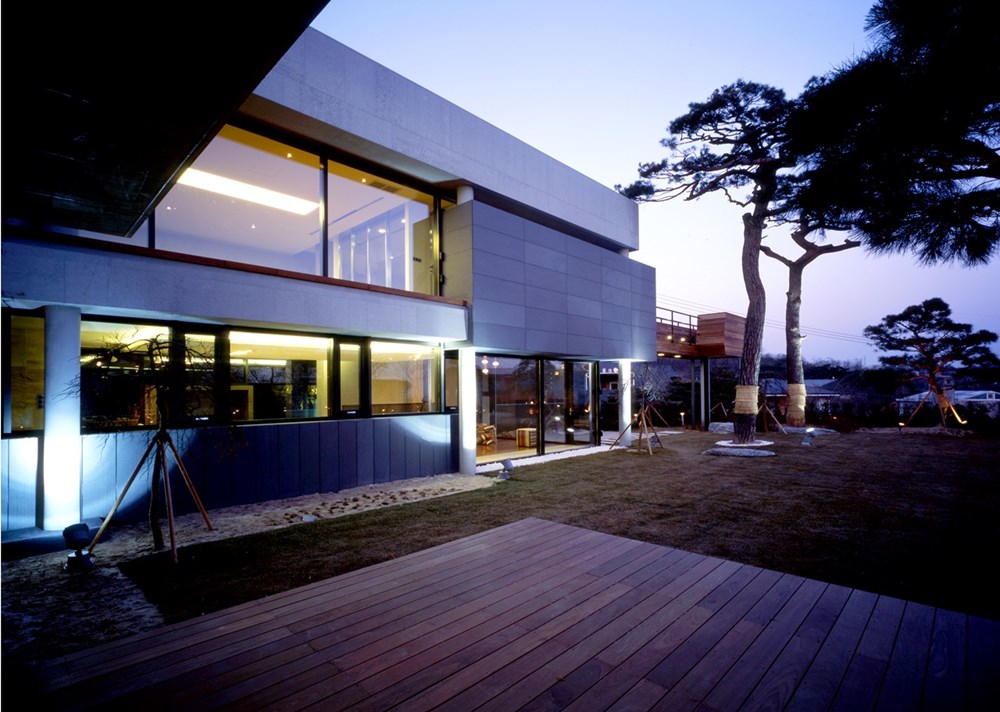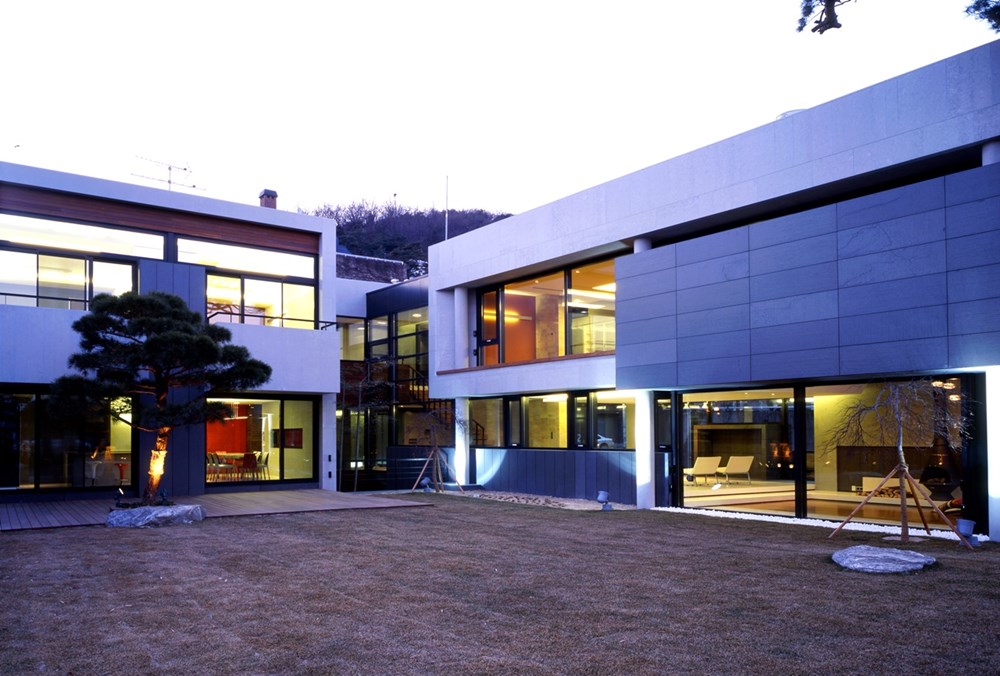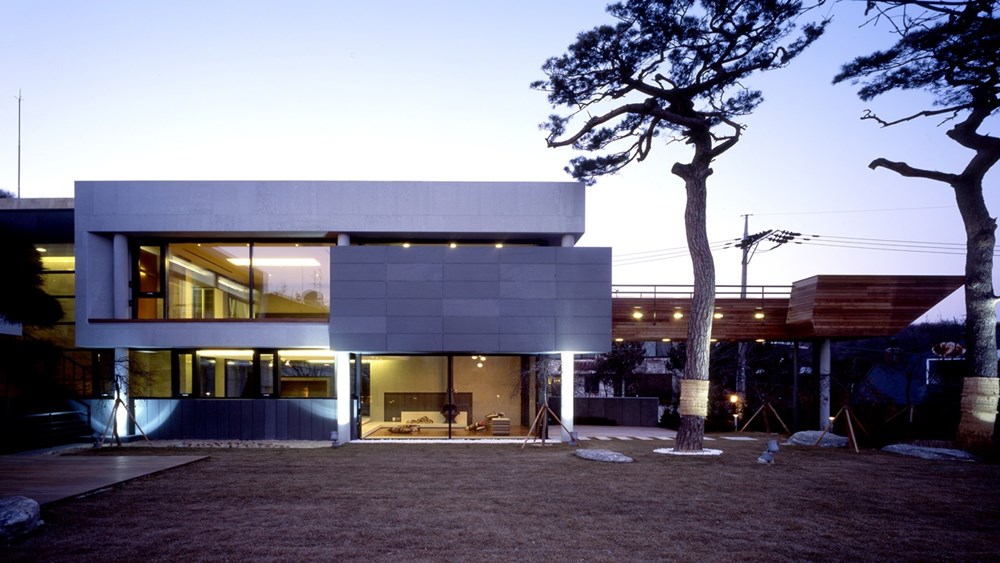Scarlet Terre is a private residence designed by L’EAU DESIGN Co. Ltd. This house, located in the residential area of Seongbuk-dong to the north of the old fortress at the edge of Mt. Bukak, looks over Seoul as if gazing straight at the downtown district.
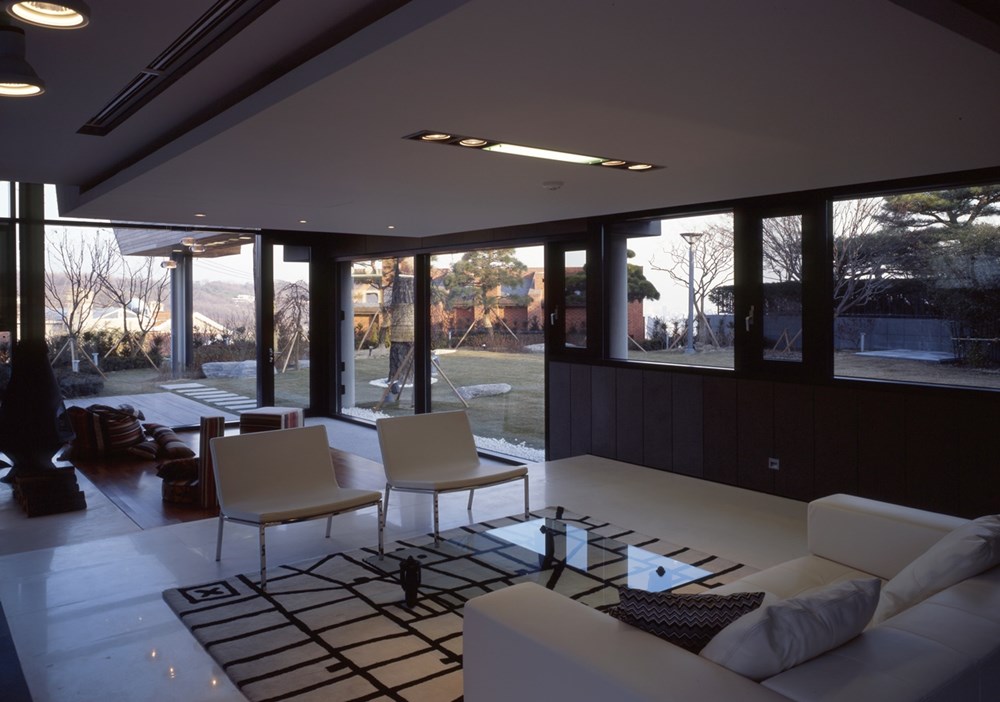
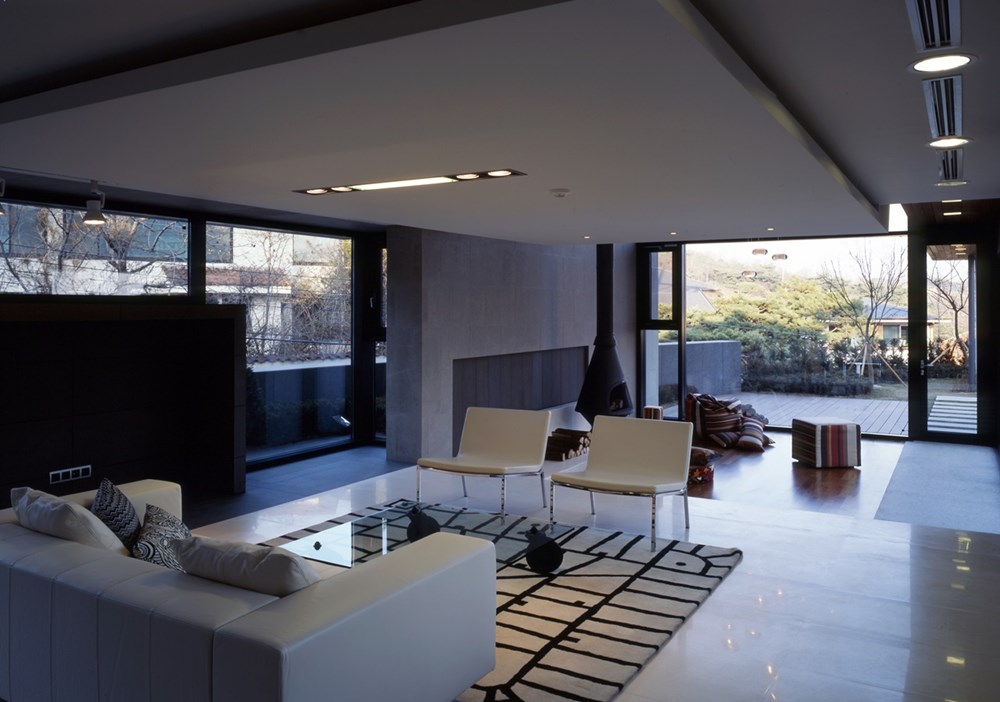
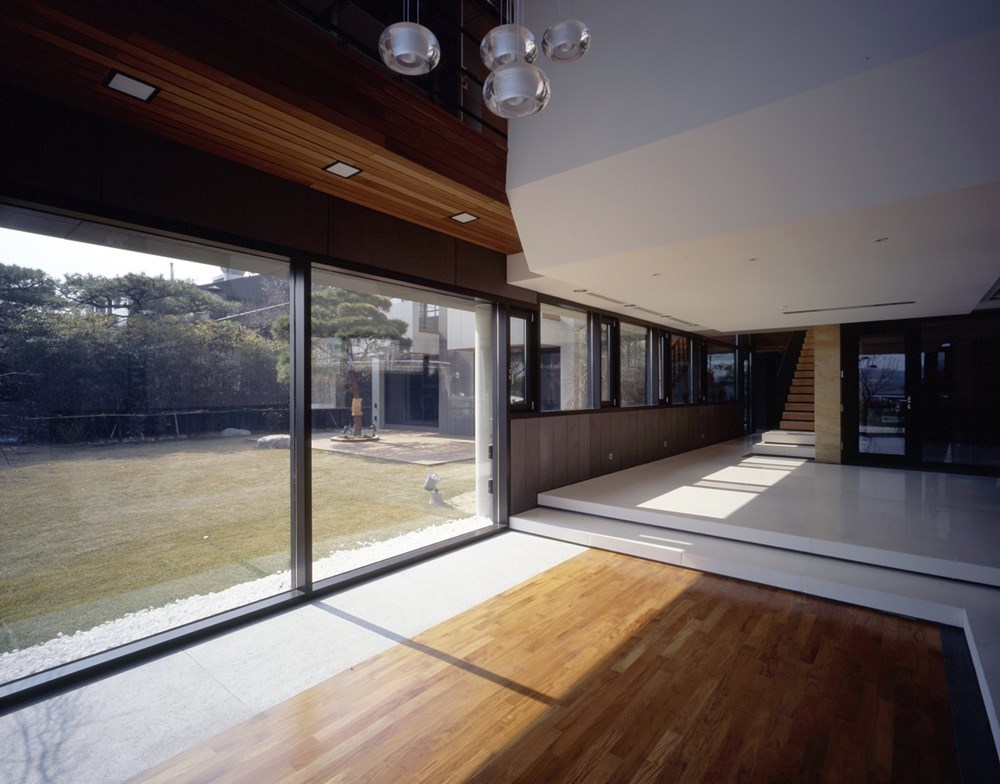
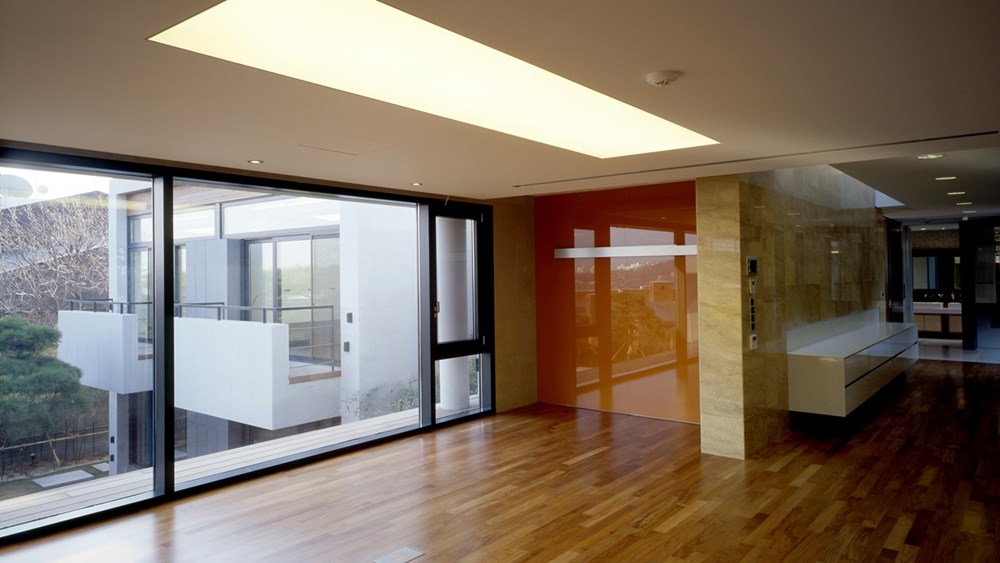
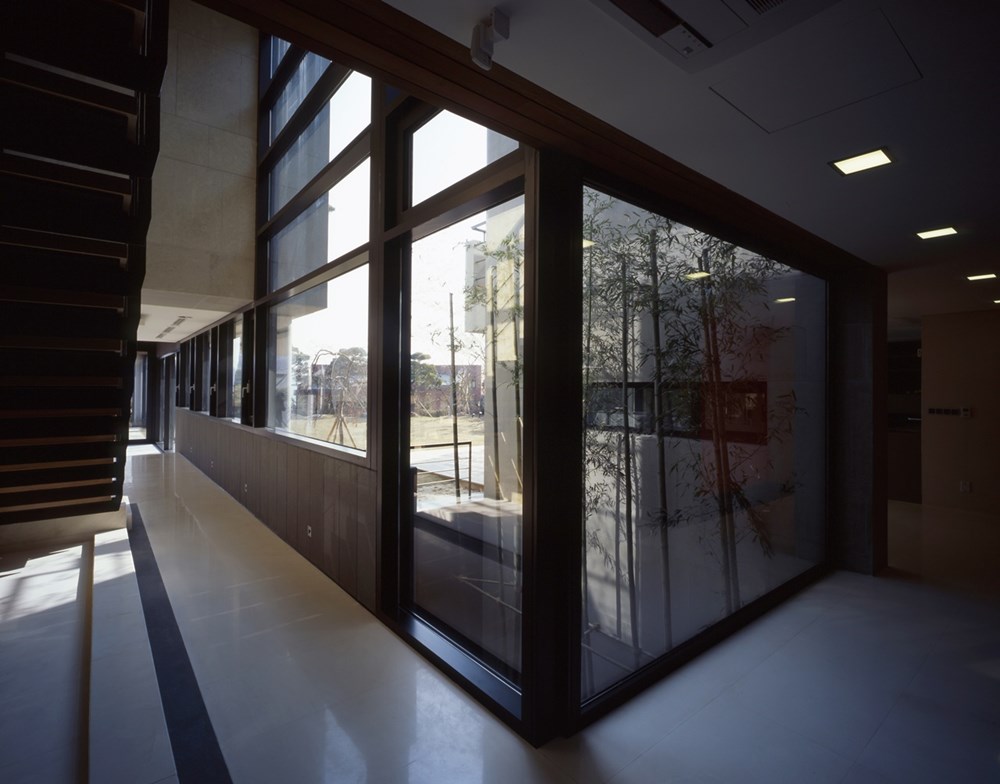
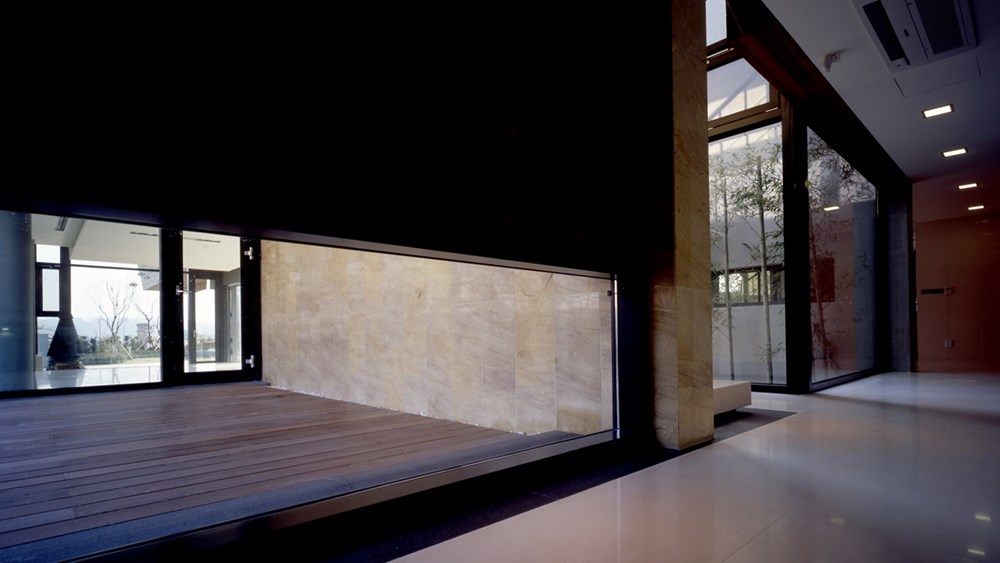
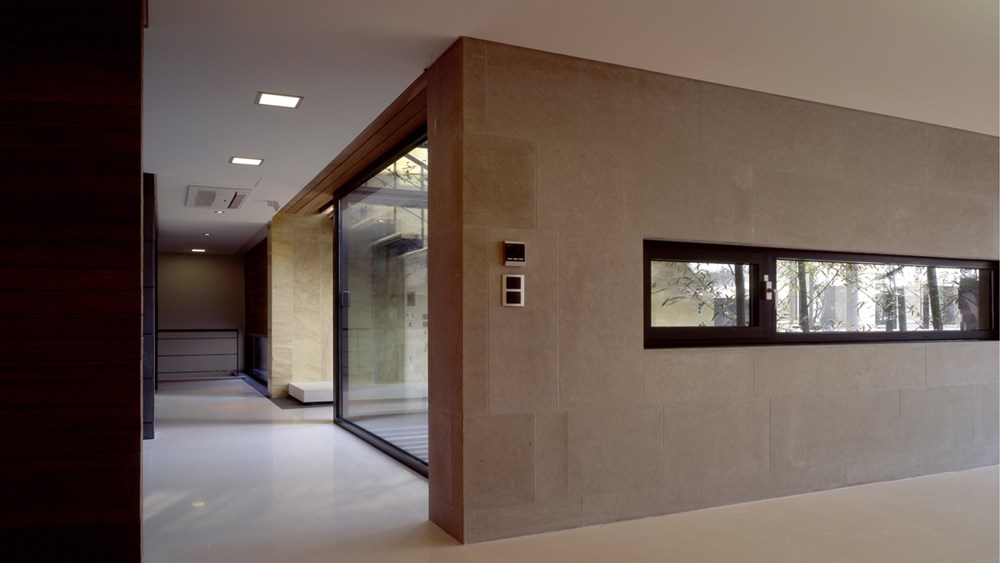
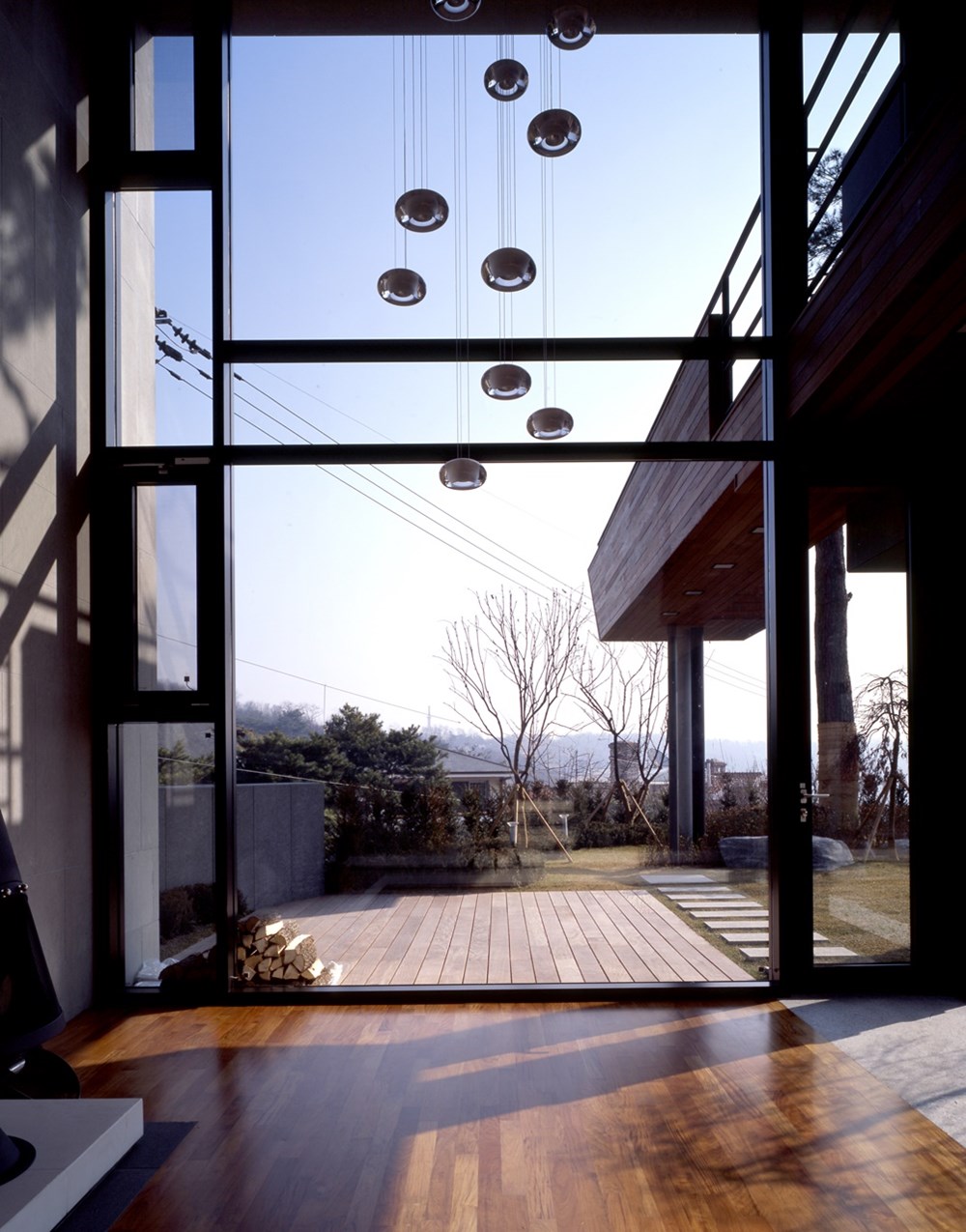
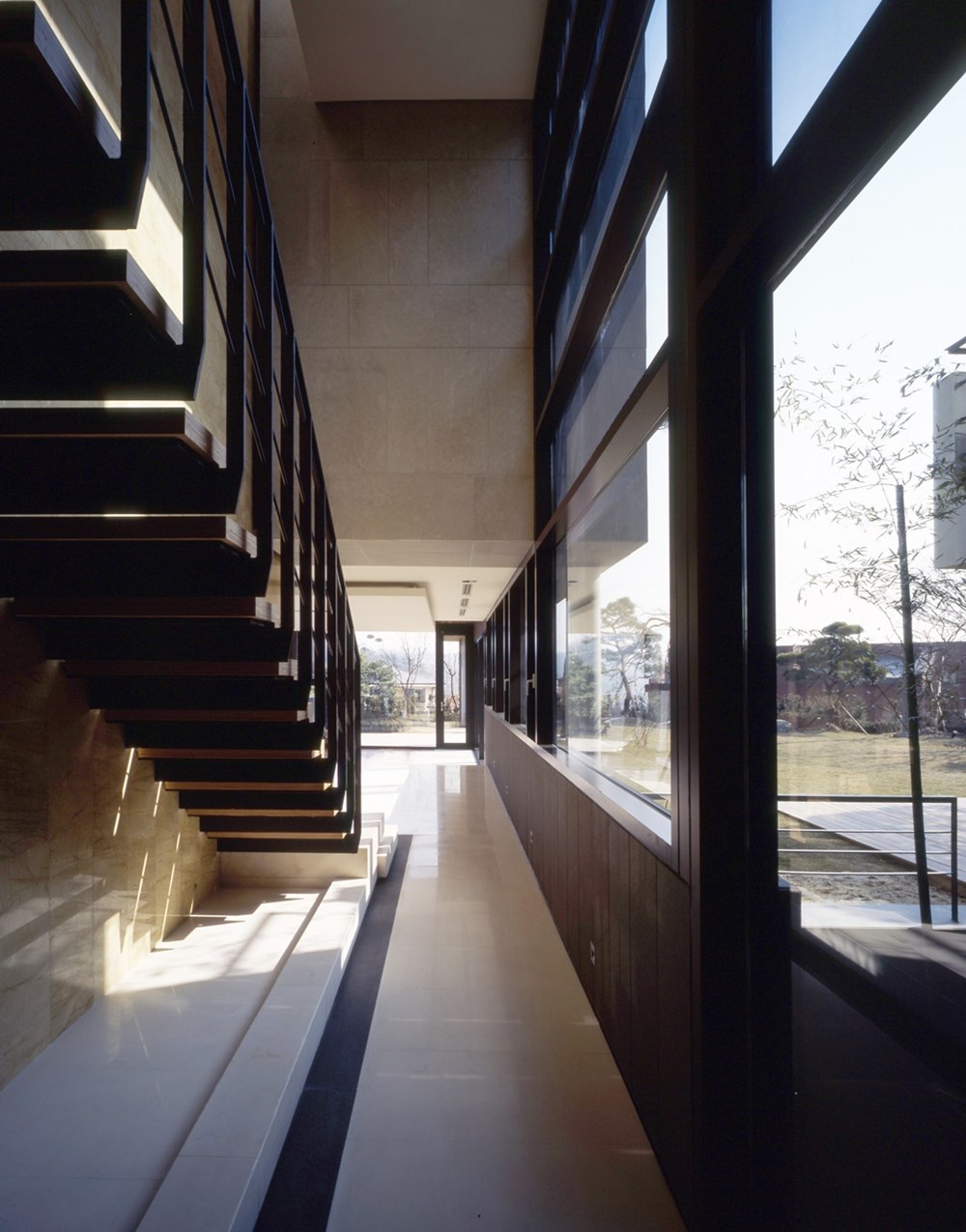
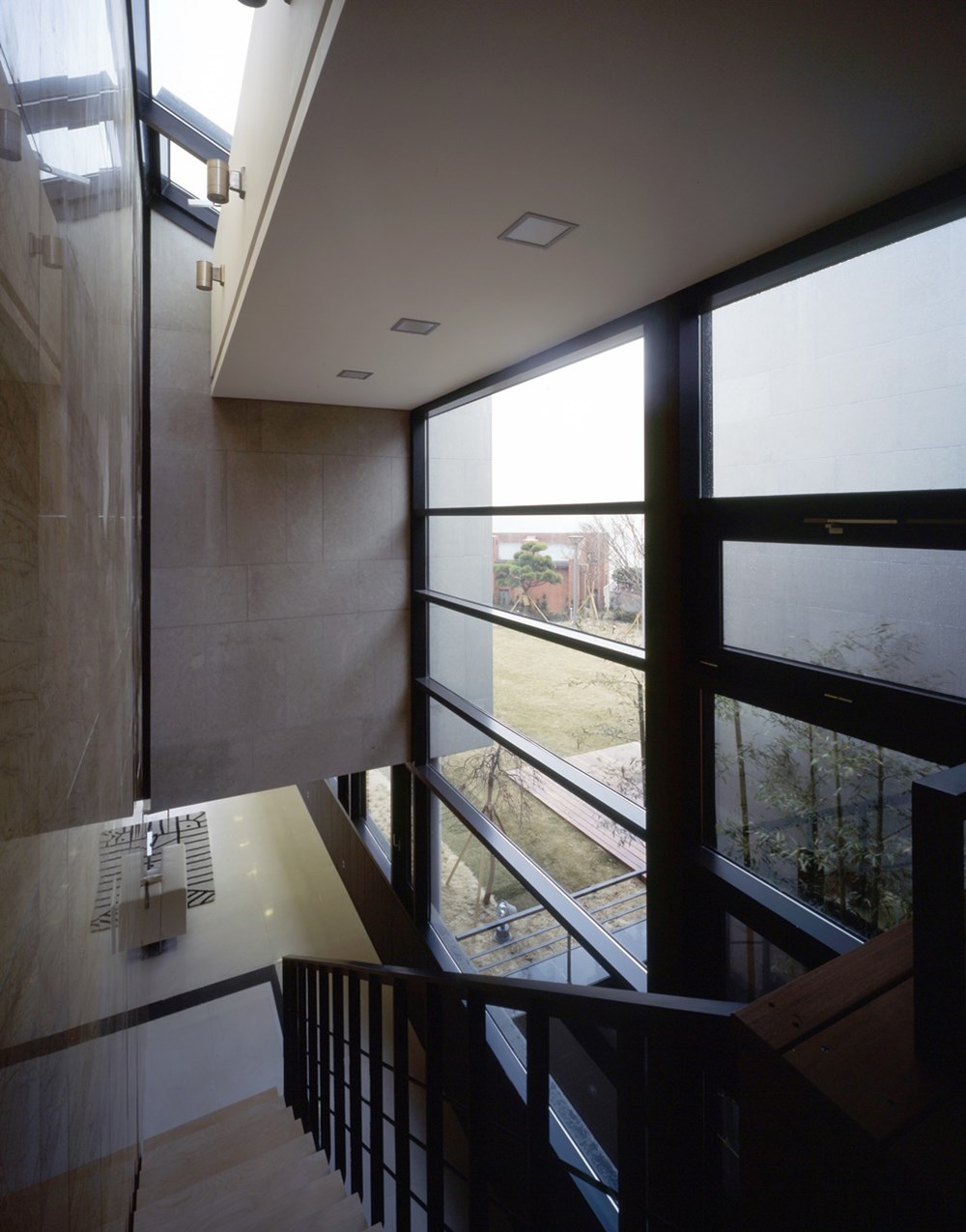
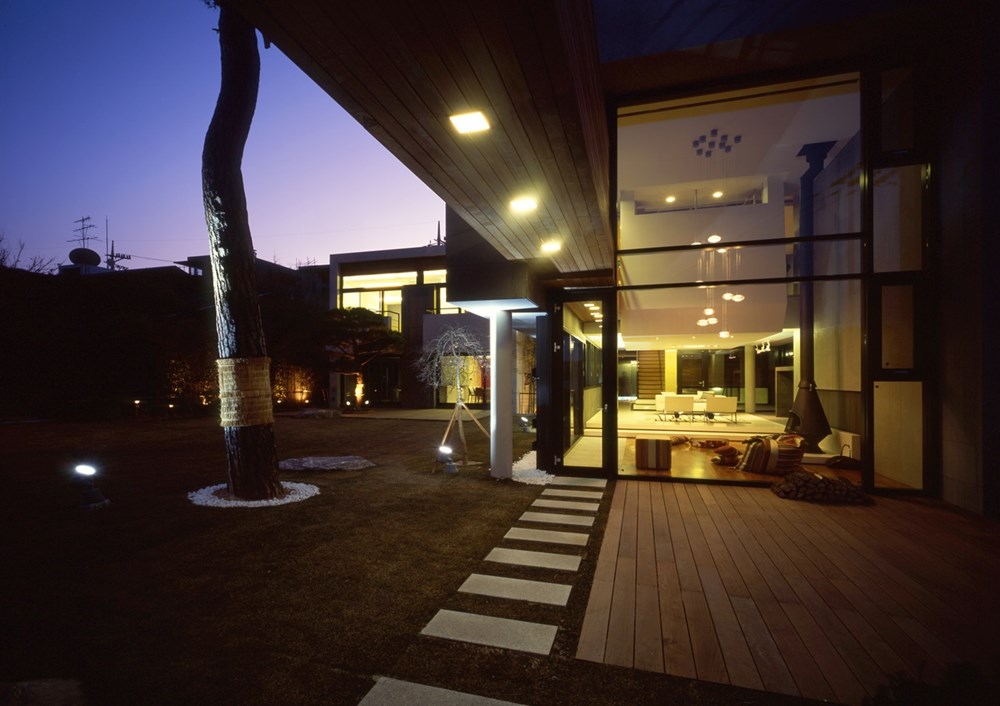
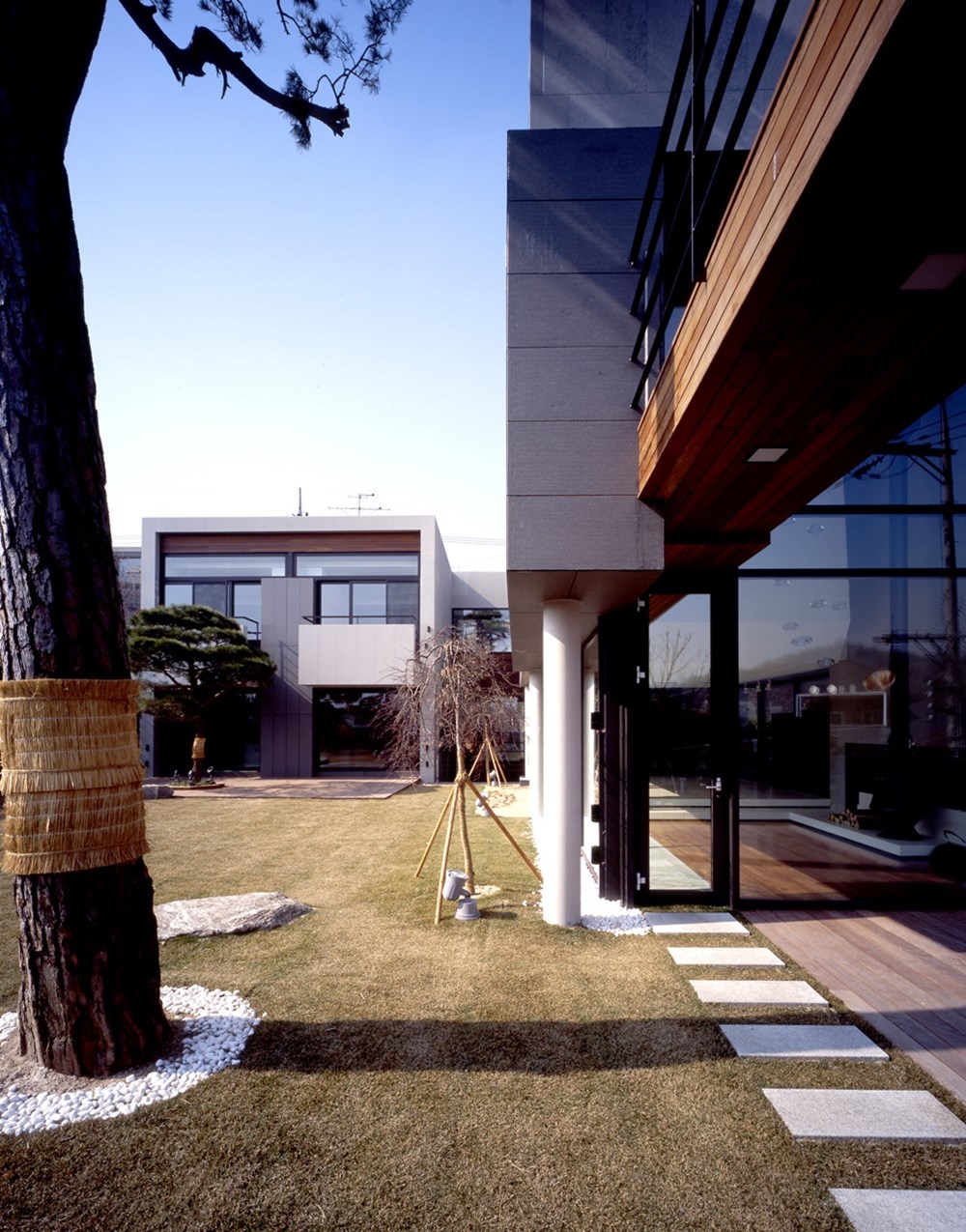
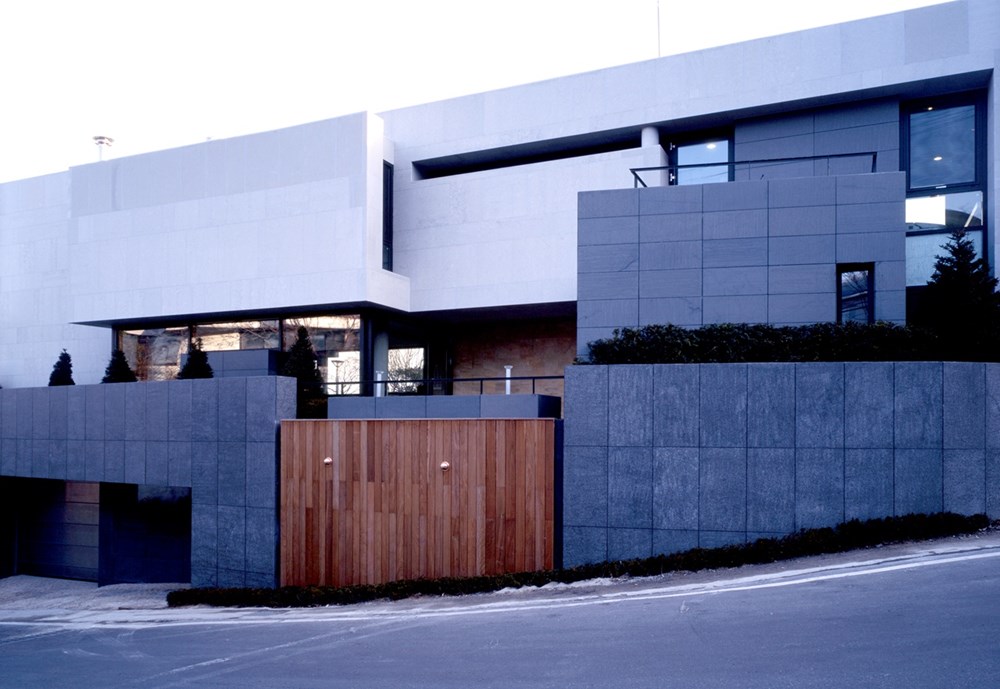
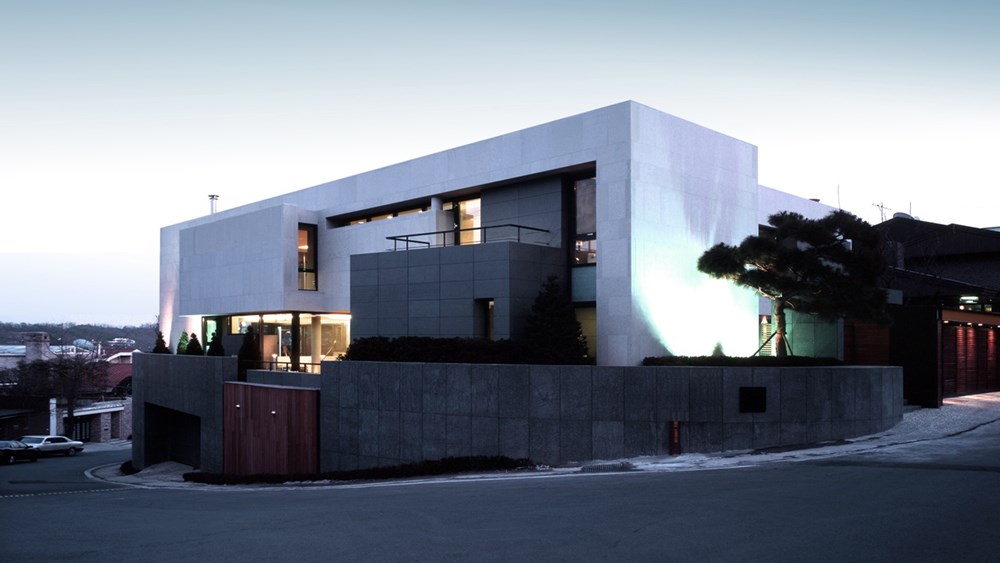
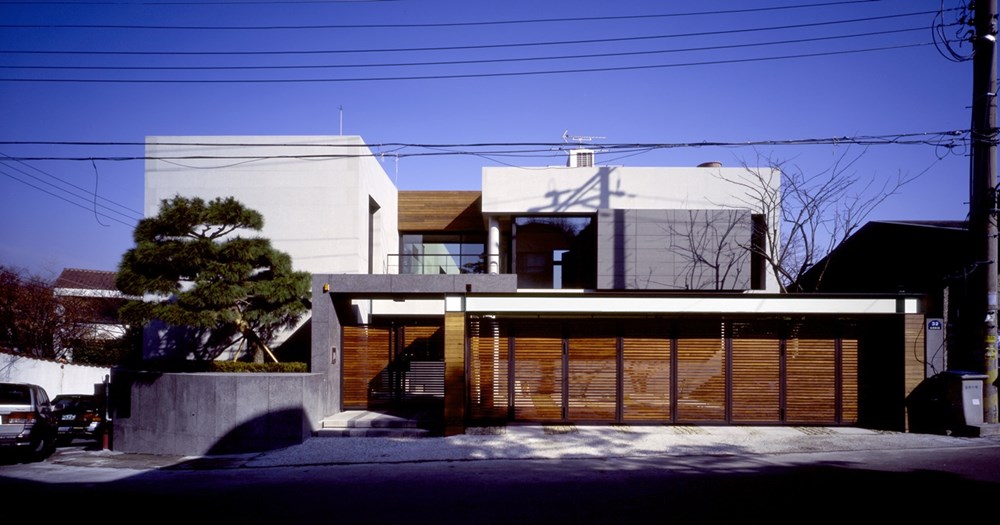
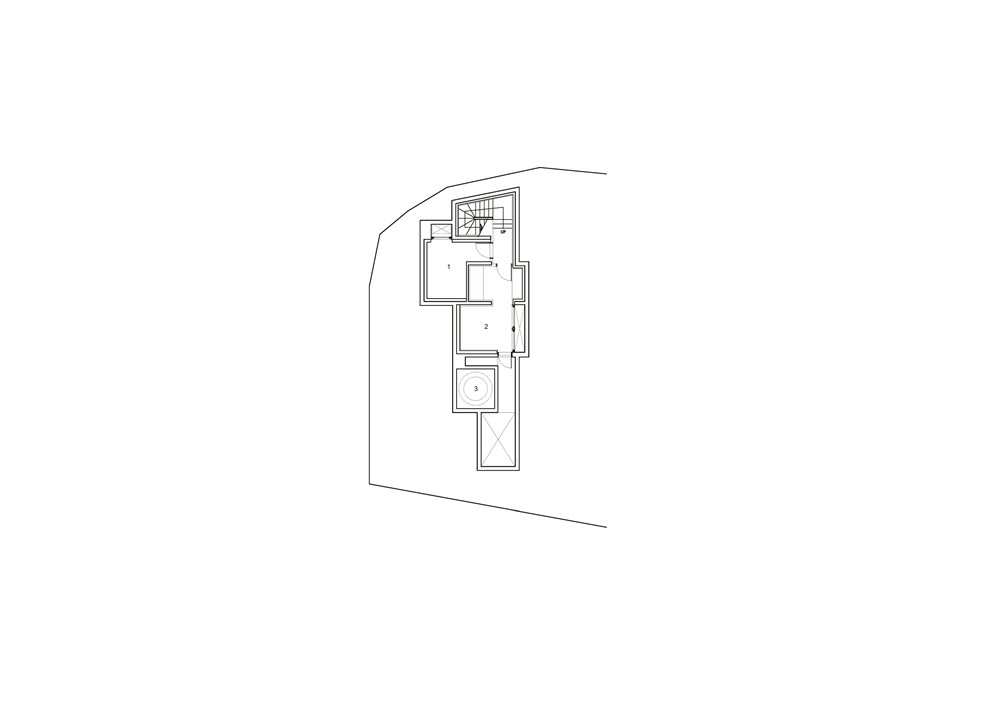
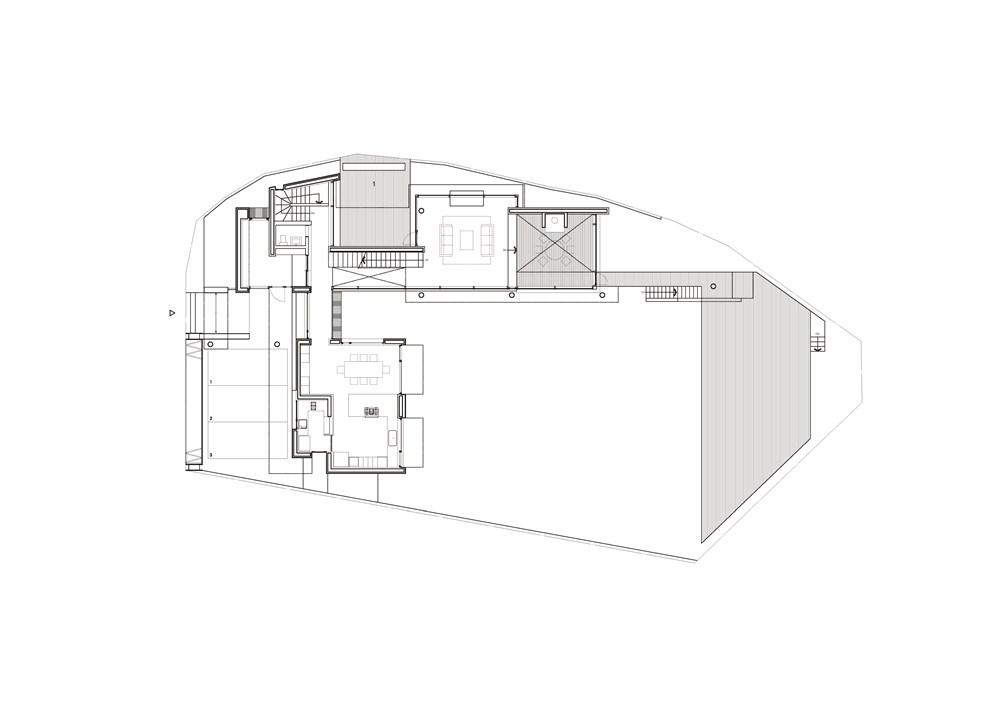
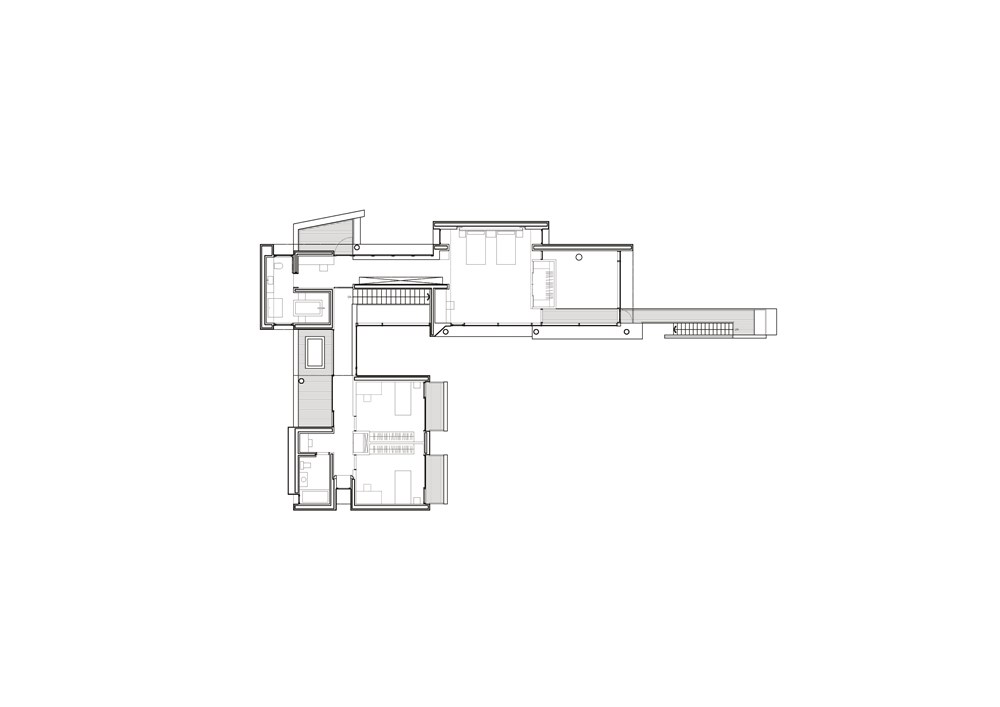
In the row of high-walled houses on the northeastern slope, the walls of ‘Scarlett Terre’ are unified with its central structure, defining a boundary for the ground while providing a view to pedestrians.
The court was placed between the two sides bordering the road as if embracing the building in an ‘L’ shape.
The intersection of this ‘L’ shape is open, allowing pedestrians to walk between the narrow walls and appreciate the view, and the porch was placed to the side. The interior of the intersecting area consists of open exterior spaces with vertical circulation and sunken sections, creating circulation for the spaces on both sides while acting as a barrier to protect private areas.
The walls, widely open to the exterior, embrace the inner spaces as a continuous ‘skin’.
Inside the house, various spaces with diverse characteristics provide open areas in connection with adjacent terraces and balconies.
The second floor is divided into private spaces for the couple and the children, respectively. The basement, sunken and open to the ground floor, remains a shared space for the family, designed to accommodate all kinds of gatherings.
Based on the idea that the typical layout of a house ?living room, kitchen, and family rooms ? cannot satisfactorily meet the residents’ different requirements, the living room was designed for all manner of meetings, rather than for routine uses like receptions and dining.
The ground floors were also designed to accommodate various types of gatherings, including dining, family meetings, and receptions, providing a nice view to those who would want to relax on the low couches. Beside the building, there is a loggia where residents can enjoy simple exercise and recreational activities.
The ground floor is open to the ceiling of the second floor, allowing residents to lay down and look up at the sky in the daylight, as in the exterior terrace court.
The couple’s private spaces were placed on the upper floor of the living room, and the library, which is likely to be regarded as a closed and dusty space, was transformed into a terrace. The linear terrace, stretching from the master bedroom on the second floor, is extended to the garden and is widely open to the city.
This project, which began with the active participation of the builder, was a fun experiment that reinterpreted the specific requirements of a residence, and it grew to reflect the daily habits of its occupants.
Photographer: SeunghoonYum
